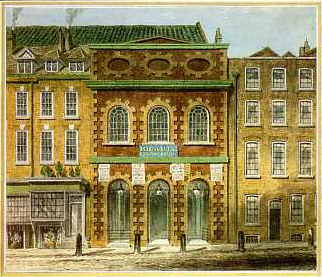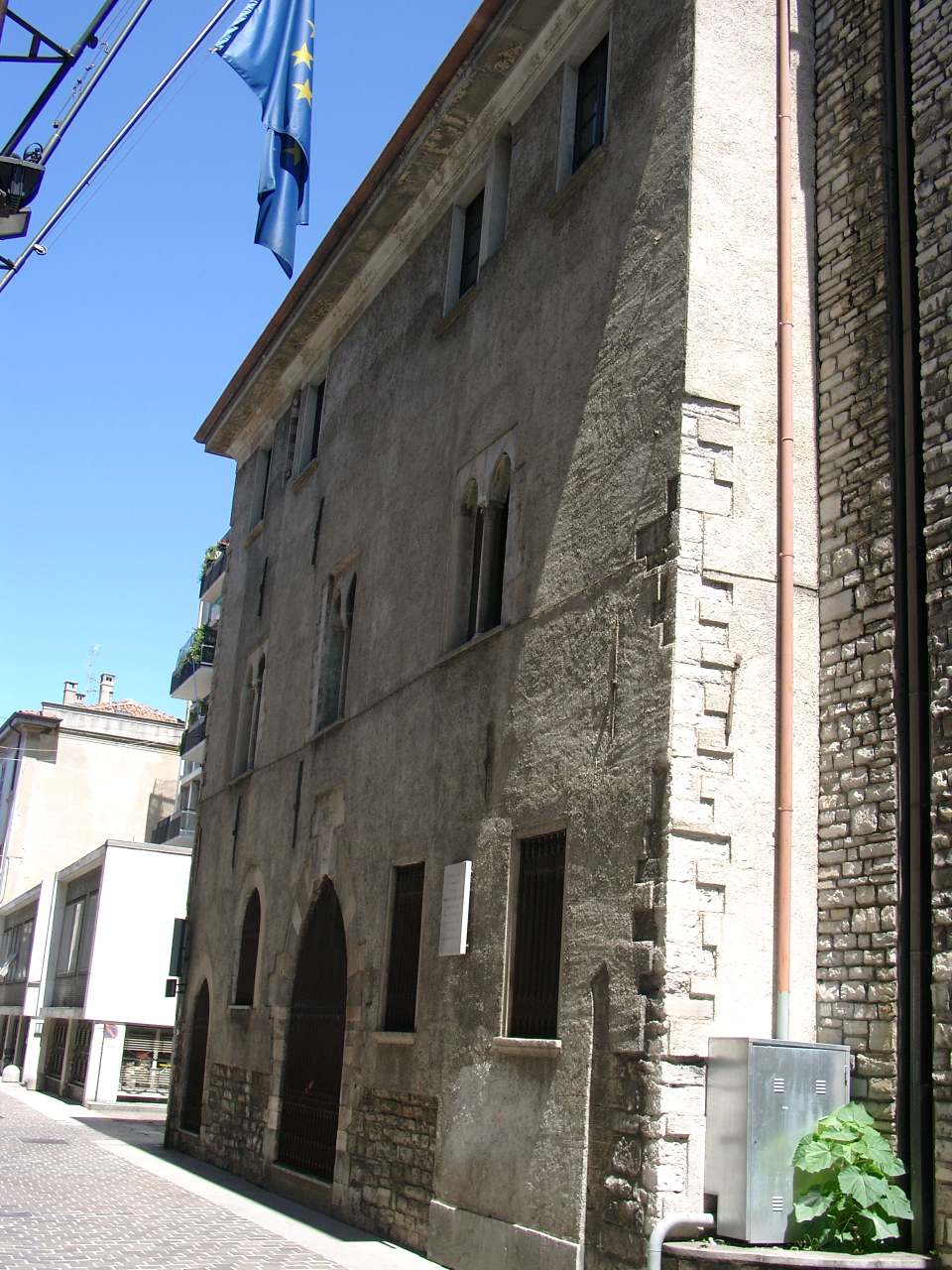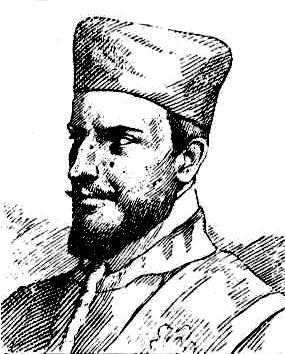|
Tor Di Nona
The Tor di Nona is a neighborhood in Rome's ''rione'' '' Ponte''. It lies in the heart of the city's historic center, between the ''Via dei Coronari'' and the Tiber River. Its name commemorates the Torre dell'Annona, a mediaeval tower which once stood there and was later converted into one of the city's most important theatres, the Teatro Tordinona, later called the Teatro Apollo. History Early history The Torre dell'Annona was a medieval stronghold of the Orsini family and from the early 15th century acted as a pontifical prison. Prisoners included Benevenuto Cellini who experienced the dungeon's lightless cells, one of which was known as "the pit", Beatrice Cenci, and Giordano Bruno who was imprisoned here before being burned alive in Campo de' Fiori. In 1659-1660, it was used during the infamous Spana Prosecution.Monson, Craig A.: The Black Widows of the Eternal City: The True Story of Rome’s Most Infamous poisoners' Theatre When the New Prison (''Le Carceri Nuove'' ... [...More Info...] [...Related Items...] OR: [Wikipedia] [Google] [Baidu] |
Tor Di Nona - Watercolour By Ettore Roesler Franz
Tor, TOR or ToR may refer to: Places * Tor, Pallars, a village in Spain * Tor, former name of Sloviansk, Ukraine, a city * Mount Tor, Tasmania, Australia, an extinct volcano * Tor Bay, Devon, England * Tor River, Western New Guinea, Indonesia Science and technology * Tor (fish), ''Tor'' (fish), a genus of fish commonly known as mahseers * Target of rapamycin, a regulatory enzyme * Tor functor, in mathematics * Tor (network), an Internet communication method for enabling online anonymity ** The Tor Project, a software organization that maintains the Tor network and the related Tor Browser People * Tor (given name), a Nordic masculine given name * Tor (surname) * Tor Johnson, stage name of Swedish professional wrestler and actor Karl Erik Tore Johansson (1902 or 1903–1971) * Tor (musician), Canadian electronic musician Tor Sjogren Arts, entertainment, and media Fictional characters * Tor (comics), a prehistoric human character * Tor, a character in the book ''The Hero and the Cro ... [...More Info...] [...Related Items...] OR: [Wikipedia] [Google] [Baidu] |
Scipione
''Scipione'' ( HWV 20), also called ''Publio Cornelio Scipione'', is an opera seria in three acts, with music composed by George Frideric Handel for the Royal Academy of Music in 1726. The librettist was Paolo Antonio Rolli. Handel composed ''Scipione'' whilst in the middle of writing ''Alessandro''. It is based on the life of the Roman general Scipio Africanus. Its slow march is the regimental march of the Grenadier Guards and is known for being played at London Metropolitan Police passing out ceremonies. Performance history ''Scipione'' had its premiere on 12 March 1726 at The King's Theatre, Haymarket. Handel revived the opera in 1730, but it did not receive another UK production until October 1967, by the Handel Opera Society. In Germany, ''Scipione'' was revived at the Göttingen International Handel Festival in 1937 and at the annual Handel Festival in Halle in 1965.Dean, Winton, "Handel's ''Scipione'' (October 1967). ''The Musical Times'', 108 (1496): pp. 902–904. Wit ... [...More Info...] [...Related Items...] OR: [Wikipedia] [Google] [Baidu] |
Robert Adam
Robert Adam (3 July 17283 March 1792) was a British neoclassical architect, interior designer and furniture designer. He was the son of William Adam (1689–1748), Scotland's foremost architect of the time, and trained under him. With his older brother John, Robert took on the family business, which included lucrative work for the Board of Ordnance, after William's death. In 1754, he left for Rome, spending nearly five years on the continent studying architecture under Charles-Louis Clérisseau and Giovanni Battista Piranesi. On his return to Britain he established a practice in London, where he was joined by his younger brother James. Here he developed the "Adam Style", and his theory of "movement" in architecture, based on his studies of antiquity and became one of the most successful and fashionable architects in the country. Adam held the post of Architect of the King's Works from 1761 to 1769. Robert Adam was a leader of the first phase of the classical revival in En ... [...More Info...] [...Related Items...] OR: [Wikipedia] [Google] [Baidu] |
Carlo Fontana
Carlo Fontana (1634 or 1638–1714) was an Italian architect originating from today's Canton Ticino, who was in part responsible for the classicizing direction taken by Late Baroque Roman architecture. Biography There seems to be no proof that he belonged to the family of famous architects of the same name, which included Domenico Fontana. Born in Brusato, near Como (now part of the town of Novazzano in Canton Ticino, Switzerland), Fontana went to Rome before 1655. He became a draughtsman for the architectural plans of Pietro da Cortona, Carlo Rainaldi, and Gian Lorenzo Bernini. Bernini employed him for nearly a decade in diverse projects. His first independent project may be the church of San Biagio in Campitelli, completed by 1665. His façade at San Marcello al Corso (1682–83) is described as one of his most successful works. For his patron, Innocent XII, he erected the immense building of the Istituto Apostolico San Michele at Ripa Grande, organized around its church; the ... [...More Info...] [...Related Items...] OR: [Wikipedia] [Google] [Baidu] |
Innocent XI
Pope Innocent XI ( la, Innocentius XI; it, Innocenzo XI; 16 May 1611 – 12 August 1689), born Benedetto Odescalchi, was head of the Catholic Church and ruler of the Papal States from 21 September 1676 to his death on August 12, 1689. Political and religious tensions with Louis XIV of France were a constant preoccupation for Innocent XI. Within the Papal States, he lowered taxes, produced a surplus in the papal budget and repudiated nepotism within the Church. Innocent XI was frugal in his governance of the Papal States, his methods evident in matters ranging from his manner of dress to a wide range of standards of personal behavior consistent with his conception of Christian values. Once he was elected to the papacy, he applied himself to moral and administrative reform of the Roman Curia. He abolished sinecures and pushed for greater simplicity in preaching as well as greater reverence in worship, requesting this of both the clergy and faithful. In consideration of his di ... [...More Info...] [...Related Items...] OR: [Wikipedia] [Google] [Baidu] |
Clement X
Pope Clement X ( la, Clemens X; it, Clemente X; 13 July 1590 – 22 July 1676), born Emilio Bonaventura Altieri, was head of the Catholic Church and ruler of the Papal States from 29 April 1670 to his death in July 1676. Elected pope at age 79, he has since been ranked as the oldest pope at the time of his election. Early life Emilio Boneventura Altieri was born in Rome in 1590, the son of Lorenzo Altieri and Vittoria Delfin, a noble Venetian lady, sister of Flaminio Delfin, commander general of the Papal Armies, and of Gentile Delfin, Bishop of Camerino. His brother was Giambattista Altieri. The Altieri family belonged to the ancient Roman nobility and had enjoyed the highest consideration at Rome for several centuries; they had occasionally contracted alliances with the Colonnas and the Orsinis. During earlier pontificates, the Altieri held many important offices and had been entrusted with several delicate missions. Early work Altieri received a doctorate in law fr ... [...More Info...] [...Related Items...] OR: [Wikipedia] [Google] [Baidu] |
Filippo Acciaiuoli
Filippo Acciaiuoli (1637 – 8 February 1700) was an Italian composer, librettist, theater manager, machine designer, and poet. Acciaiuoli spent much of his youth and early adulthood traveling throughout Europe, the Middle East and Northern Africa. After returning to Rome in his early twenties, he initially studied mathematics at a seminary in Rome but ultimately became interested in theater. He is best known for his work as a librettist for operas such as Jacopo Melani's '' Girello'', which premiered in Rome in 1668, and as the inventor of numerous sophisticated machines that were used in theatrical productions of the day. He also composed one opera, ''Chi è cagion del suo mal pianga se stesso'', which premiered in Rome in 1682. Acciaiuoli was the first business manager of the Teatro Tordinona in Rome and later the manager of the Teatro Capranica. He was also a member of ''l'Academia degli Immobili'' when Ferdinando Tacca developed its Teatro della Pergola. He had a close asso ... [...More Info...] [...Related Items...] OR: [Wikipedia] [Google] [Baidu] |
Giovanni Maria Pagliardi
Giovanni Maria Pagliardi (1637–1702) was an Italian composer. He became de facto maestro di cappella at Florence Cathedral Florence Cathedral, formally the (; in English Cathedral of Saint Mary of the Flower), is the cathedral of Florence, Italy ( it, Duomo di Firenze). It was begun in 1296 in the Gothic style to a design of Arnolfo di Cambio and was structurally c ... from 1690, but did not formally gain the title till the death of his predecessor, Pietro Sammartini. Works *''L'innocenza trionfante'', oratorio performed at Ss Annunziata, Genoa in 1660 *''Il Caligola delirante'', 3-act opera at Teatro SS Giovanni e Paolo in Venice; Giovanni Maria Pagliardi, libretto Domenico Gisberti - 1672 Venice, restaged 1680 *''Lisimaco'', text by Ivanovich 1673 *''Numa Pompilio'' 1674, Venice *''Lo speziale di villa'', Florence - probably not originally by Pagliardi *''Il finto chimico'' 1686, Florence *''Il pazzo per forza'' 1687, Pratolino, FlorenceRobert Lamar Weaver, Norma Wright We ... [...More Info...] [...Related Items...] OR: [Wikipedia] [Google] [Baidu] |
Giovanni Antonio Boretto
Giovanni may refer to: * Giovanni (name), an Italian male given name and surname * Giovanni (meteorology), a Web interface for users to analyze NASA's gridded data * ''Don Giovanni'', a 1787 opera by Wolfgang Amadeus Mozart, based on the legend of Don Juan * Giovanni (Pokémon), boss of Team Rocket in the fictional world of Pokémon * Giovanni (World of Darkness), a group of vampires in ''Vampire: The Masquerade/World of Darkness'' roleplay and video game * "Giovanni", a song by Band-Maid from the 2021 album ''Unseen World'' * ''Giovanni's Island'', a 2014 Japanese anime drama film * ''Giovanni's Room'', a 1956 novel by James Baldwin * Via Giovanni, places in Rome See also * * *Geovani *Giovanni Battista *San Giovanni (other) *San Giovanni Battista (other) San Giovanni Battista is the Italian translation of Saint John the Baptist. It may also refer to: Italian churches * San Giovanni Battista, Highway A11, a church in Florence, Italy * San Giovanni Battista, Pra ... [...More Info...] [...Related Items...] OR: [Wikipedia] [Google] [Baidu] |
Antonio Sartorio
Antonio Sartorio (1630 – 30 December 1680) was an Italian composer active mainly in Venice, Italy, and in Hanover, Germany. He was a leading composer of operas in his native Venice in the 1660s and 1670s and was also known for composing in other genres of vocal music. Between 1665 and 1675 he spent most of his time in Hanover, where he held the post of ''Kapellmeister'' to Duke Johann Friedrich of Brunswick-Lüneburg – returning frequently to Venice to compose operas for the Carnival. In 1676 he became vice ''maestro di capella'' at San Marco in Venice. Early work in Italy and work as ''Kapellmeister'' Sartorio was the brother of composer and organist Gasparo Sartorio and architect Girolamo Sartorio who also had connections with the theatre. Beyond birth records, the first known information about Sartorio relates to the mounting of his first opera, ''Gl'amori infruttuosi di Pirro'', at the Teatro di San Giovanni Grisostomo in Venice on 4 January 1661. His second op ... [...More Info...] [...Related Items...] OR: [Wikipedia] [Google] [Baidu] |
Scipione Affricano
''Scipione affricano'' (''Scipio Africanus'') is an opera in a prologue and three acts by Francesco Cavalli. It was designated as a ''dramma per musica''. The Italian libretto was by Nicolò Minato, based on Livy's " The Continence of Scipio". Performance history It was first performed in Venice at the Teatro SS. Giovanni e Paolo on 9 February 1664. It was also given in Rome in 1671 with the castrato Giovanni Francesco Grossi as a celebrated Siface. Giovanni Buonaventura Viviani produced a greatly revised version of the opera for the Carnival of Venice in 1678. Roles Recordings *Atto III Scena 3: "A tuo dispetto amor" Cappella Mediterranea, Leonardo García Alarcón, Clematis, Thomas Dunford 2014 *"Hora si ch'assai più fiero" Filippo Mineccia (counter-tenor) Nereydas Javier Ulises Illán Glossa 2018 References Further reading *Clinkscale, Martha Novak, "''Scipione affricano''", ''The New Grove Dictionary of Opera ''The New Grove Dictionary of Opera'' is an encyclo ... [...More Info...] [...Related Items...] OR: [Wikipedia] [Google] [Baidu] |


.jpg)


